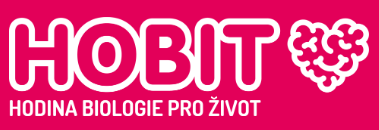Schoolchildren of the Visegrad Four learn according to the HOBIT programme
More than 1,700 primary school pupils from the Czech Republic, Slovakia, Poland and Hungary have received special training on stroke and heart attack through e-learning. A total of 152 classes from 29 primary schools and 56 teachers from the Visegrad Four countries participated in the project “V4 HOBIT: Saving Lives in the V4 through Health Education in Schools”.
The V4 HOBIT project was launched in March 2021 and its main coordinator is the Public Health Group of the Cerebrovascular Team of the International Clinical Research Centre of St. Anne’s University Hospital in Brno. The project partners are Semmelweis University (HU), Jagiellonian University in Krakow (PL) and University Hospital of L. Pasteur (SK).
The HOBIT programme has been running in Czech schools since 2014. However, it is new for teachers and pupils from the other three countries. In Slovakia, pupils from 68 classes in 10 schools learned how to recognise the symptoms of a stroke or heart attack and what to do in that moment. Most of them were from Košice, but there were also schools from Bratislava, Považská Bystrica and Trstená. In Poland, most of the schools from one city, Krakow, participated. In total, there were 24 classes from 5 schools. In Hungary, schoolchildren from different schools and towns participated in the project. The 28 classes from 9 schools came from cities such as Szeged, Nyírbátor, Zalaegerszeg or Szigetszentmiklós. The Czech Republic was represented by 32 classes from 5 schools coming from Ostrava, Brno, Ústí nad Orlicí, Domažlice and Štětí.
HOBIT educates through simulation scenes
The e-learning of the HOBIT educational programme consists of three parts. First, pupils go through a short section of several test questions to find out how much they already know about stroke and heart attack. Then they watch a video and finally go through the test again.
In each of the participating countries, pupils’ knowledge of the selected diseases increased by at least 10% after completing the full test. The biggest jump was in Slovakia, where the numbers jumped from an average of 44.8% (pupils’ success rate on the first questions) to 59.5% (pupils’ success rate on the final test). The smallest difference between the first and second tests was in Hungary. While Hungarian pupils passed the first test with an average pass rate of 53.5%, they achieved a pass rate of 57% in the second test.
One test is not the end of the project
Around 1,700 pupils from the V4 countries took the e-learning and tests in two rounds. The results allowed the research team to compare what the pupils remembered from the previous testing and thus evaluate the effectiveness of the international HOBIT learning platform.
“The result of the overall testing of the pupils’ success rate in the second round is very similar to that of the first round, ranging from 55% to 60%. For us and for the teachers, this means that the HOBIT education programme makes sense. These diseases (note: stroke and heart attack) are part of our everyday lives. Pupils are enthusiastic about the programme and learn something they can really use in their lives. They are not so helpless in crisis situations,” says Renata Hejnová, the coordinator of the HOBIT programme in the Czech Republic.
The e-learning of the HOBIT training programme is still active on the website https://projecthobit.eu/ in all four languages. If you are interested in taking part in the training programme, you can contact the coordinators and get the necessary information by e-mail: projekthobit@fnusa.cz.
The implementation of the training programme in schools was carried out by GrapePR in Slovakia, Agencja Pretty Good in Poland and Diamond Agency in Hungary. In the Czech Republic, schools that had already been involved in the HOBIT programme in previous years were contacted.


